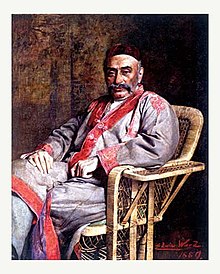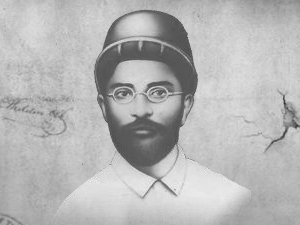
After the fall of what would later be the Bengal presidency to the British, the East India Company’s reach was firmly established on Indian soil. After this, Bengal witnessed a steady rise in the number of agency houses. Agency houses were established as adjuncts to company establishments, initially facilitating remittances to England and then assuming roles of European banking and steam shipping. These roles increased after the fall of the EIC’s monopoly in 1813. Fueled by the Industrial Revolution in the West, they started branching out to try their hand at other industrial activities such as indigo plantation, coal mining, and steel-making. Dwarakanath Tagore, one of the first non-Vaishyas to enter the business, filled in the vacuum left by the agency houses in Bengal after their fall due to the Depression of 1829. He established Carr, Tagore and Company to do what the agency houses had done before them: banking, steam shipping, and even a colliery. His landed aristocratic position in society facilitated his financing of these operations.
Political and Societal changes made way for entrepreneurship
Another fascinating development during this age is that from 1834-1847, a host of new partnerships between Bengalis and Englishmen started cropping up, an entirely new phenomenon in Indian Business History. However, we have to keep in mind that those that did this were ideologically or culturally close to the British. At this time, the traditional mercantile classes did not deviate from their initial operations. These partnerships died out after 1847, but this was still a giant leap forward. A point to note is that these partnerships did not go any further than the operations of the early agency houses.
The material environment also underwent a considerable change with the introduction of secular education and the spread of Western ideas. These weakened the hold of religion and superstition over those who came into contact with such teachings. Such ideas also gave birth to many movements that strived to serve the public like the Brahmo Samaj, the Arya Samaj, and the Prarthana Samaj. Political and economic stability was strengthened, custom barriers were abolished, and movement was improved and secured. Then came the establishment of the post and telegraph system and the building of roads and railways in the latter half of the 18th century that improved transportation and communication.
Once the first factories started being established, entrepreneurship started flourishing with the entry of the Hindus first and with the Jains not far behind. Here, it is essential to note that for the upper castes who had experience in trading, the transition to the modern factory system simply meant vertical integration from trade to manufacturing and did not mean a basic change in actual functions. For the lower castes and the artisans, clubbed under the banner of Shudra, the change represented a transition from manufacturer to employee, one who worked machines rather than producing handicrafts themselves. This was an adverse change that some could not stomach, especially for industries that were considered impure, such as the leather-working industries. In such cases, religious values did pose a hindrance to entrepreneurship.
Pioneering Industrialists showed the way
It is worth noting that the entrepreneurs at that time started at an early age, often as traders and that while setting up their industries, they had to face highly challenging circumstances. There was a dearth of skilled labor and so, like all the machinery required for the industrial processes, they too had to be imported. Then there was the unique problem of managing unskilled labor, which, hitherto, had been divided sharply across social lines. Added to these difficulties, they also had to face unfavorable policies imposed by the colonial government. It’s also interesting to note that the entrepreneurs of the time, while financially wise – with their investments – and technically sound – importing techniques from the West – were also willing to experiment and even try out methods that were still innovations in the West.
Pioneering industrialists were making waves in various sectors and the cotton textile industry established itself as a force to be reckoned with by 1875 due to increased demand from the east and rising internal cotton consumption.
NM Tripathi established a publishing firm under his name.
Rajendra Nath Mookerji contributed significantly to the ironworks of the Bengal government through his firm, which later became a reputable engineering firm.
Of course, any conversation about entrepreneurship and industry in India is incomplete without mentioning perhaps the most extraordinary business magnate India has yet birthed. One of the most industrious of his time, Jamsetji Nusserwanji Tata was a true visionary. Among his exploits are three cotton textile mills and the foundations laid for an iron and steel company and the first hydroelectric system in India, both of which were posthumously realized. He played a pioneering role in developing the iron and steel industry and his legacy survives till this day, manifested in the mighty conglomerate that is Tata Sons. And these are but a few examples of industrial entrepreneurship.

Indian industry well and truly took off in the inter-War period. The erstwhile mercantile communities (otherwise called the Vaishyas), the Jains, the reputable Marwaris of the West and Chettiers of the South were late in taking advantage of the new educational facilities and the Western ideas; thus remaining confined to their traditional roles as financiers, bankers, and money-lenders. During the inter-War years, there was a drastic reduction in the import of essential goods, creating considerable demand. The Indian industrials rushed in to fill this vacuum, making incredible profits in the process. The colonial government also extended protection to domestic industries during the inter-War years and stabilized currency. The Swadeshi movement significantly increased the demand for domestic goods. Thus, for the aforementioned communities mentioned within this paragraph, the material environment seemed ripe enough for entry. With their considerable capital reserves, they entered fields such as sugar, cement, textiles and chemicals, among others. Many of the renowned business families of today made their bones in the inter-War era including the Birlas, the Dalmias and the Goenkas.
Entrepreneurial sources became far more diverse in this decade. These early decades of the nineteenth century also witnessed the rise of self-made entrepreneurs who dedicated the profits they made in small industries to enter industrial entrepreneurship and, in some cases, found resounding success.

For example, Ardeshir Godrej made huge profits selling locks in the dying years of the nineteenth century. In the second decade of the next, his company manufactured the first-ever soap without animal fat. He then diversified into furniture a few years later. His incredible success garnered positive reviews from those in support of the Swadeshi movement, with the Mahatma himself heaping praise upon him. Nowadays, of course, Godrej is a towering company with far more than locks and soaps to its name.
This period was also characterized by Indian entrepreneurs having more critical roles in the industrial landscape in comparison to their British counterparts with the ascendance of the Thapars, the Birlas, the Kirloskars and the rest. Phiroze B Medhora writes in his journal article titled ‘Entrepreneurship In India’ ,
Where both foreign and Indian enterprise competed, Indian enterprise was more bold and more resourceful.
(Note from the Author: I believe it is pertinent to set before the reader a caveat: I am not an authority on this subject. The document before you is a culmination of weeks of secondary research, and credit, if any, must flow to the authors that I have referred to in the course of my study. As such, I feel compelled to highlight two prominent scholars that stand out: Mr. Dwijendra Tripathi and Mr Phiroze B Medhora. Modern Indian Business Studies owe a considerable amount to the efforts of both of these scholars, and their works are a must-read for all who wish to educate themselves on the subject. I sincerely hope you enjoyed reading this article.)
Anjaney Sudhakaran is an undergraduate business student at the Indian Institute of Management, Indore. His academic interests include economics, history and statistics. He loves to read fiction and is an ardent movie enthusiast


